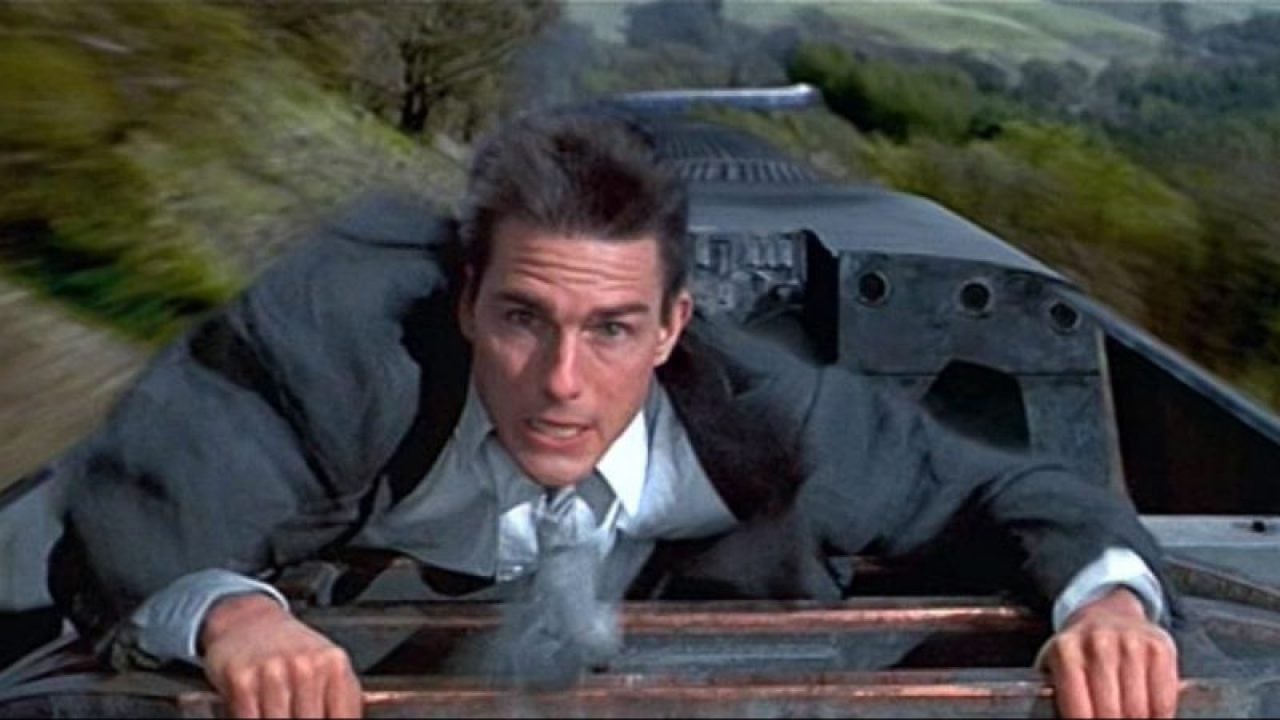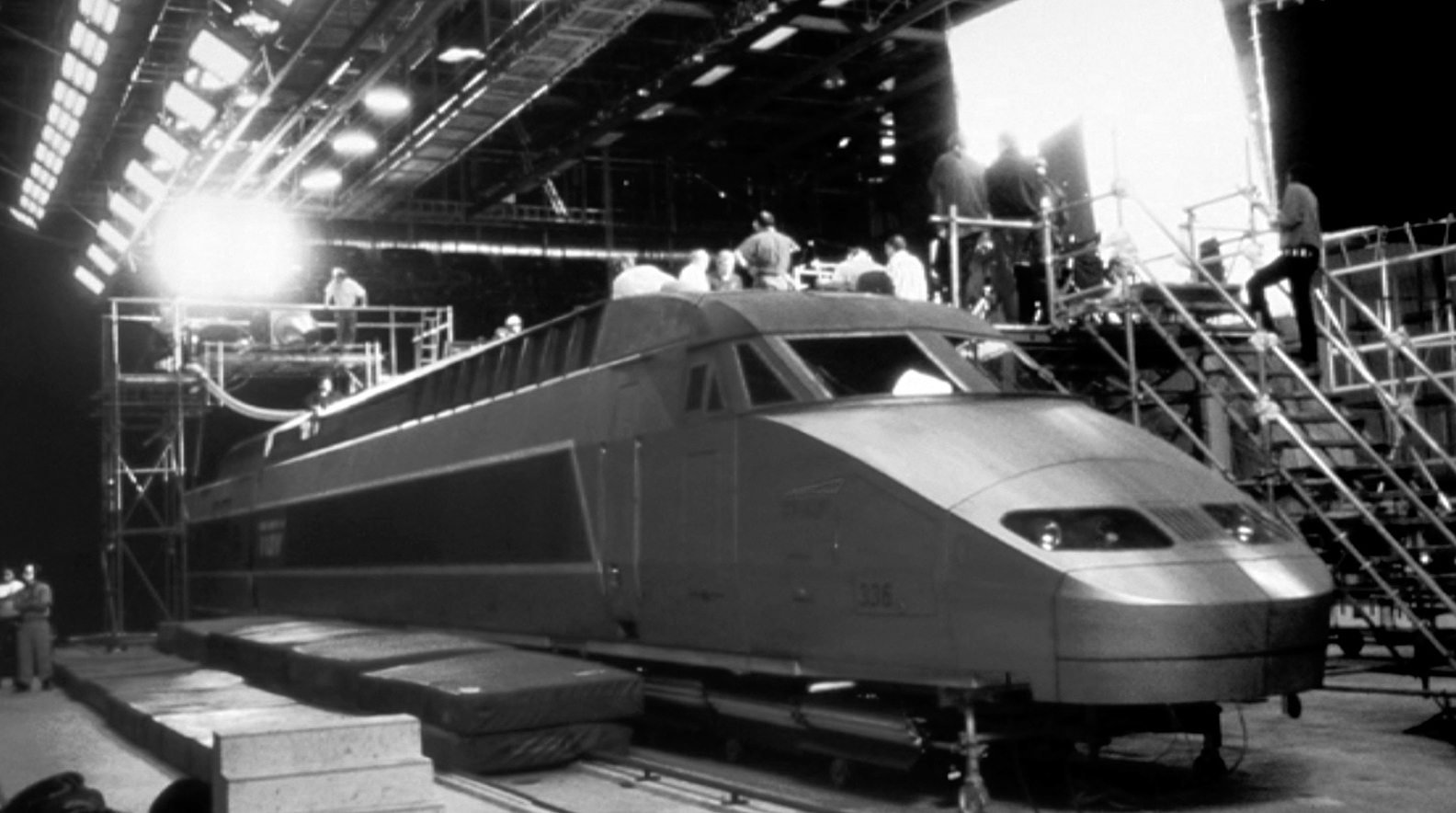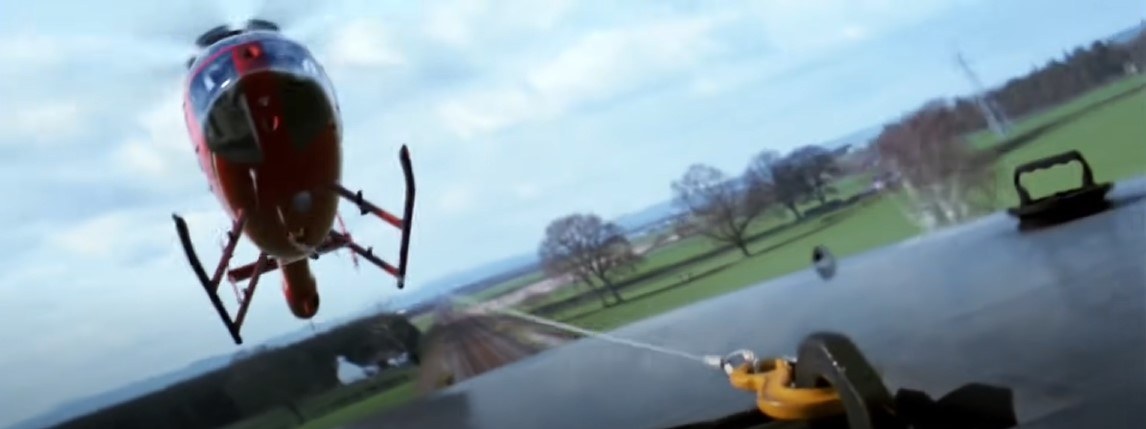
Making Mission Possible
Industrial Light & Magic creates a high-velocity climax for Mission: Impossible.
Mission: Impossible has always been ripe for a revival. With its famous high-velocity theme music (composed by Lalo Schifrin) and enigmatic opening sequence (wherein Mr. Phelps receives his taped assignment in some innocuous setting, be it sewer or sinkhole), Mission was among the most iconic TV series of the 1960s.
Just as those microcassette recorders inevitably smoldered into self-destruction, so too has Phelps, who returned in Brian De Palma's big-screen revival not as the hero, but as the hero gone bad.

Saving the world this time around is brilliant young Impossible Missions Force agent Ethan Hunt (Tom Cruise), who must prevent Phelps (Jon Voight), from selling the CIA's "NOC list" — an index of IMF contacts — to some foreign power. After acquiring this MacGuffin aboard a French TGV train speeding at 160 miles per hour through the England-bound Chunnel, Phelps makes his perfect getaway. Employing magnetic grips, Phelps traverses the slick top of the train's rear engine. Hunt follows Phelps — minus any high-tech gear and wearing a sportscoat. The ferocious wind flips Hunt over onto the train's slippery roof as Phelps' ride appears: a helicopter. Helpless to stop him, Hunt desperately clings to the train. There's no place for him to go and nothing to hold onto, which is exactly where De Palma and Industrial Light & Magic wanted him.

ILM contributed 150 shots to the breathtaking seven-minute train sequence, most of them achieved with startlingly real computer graphics created on a variety of Silicon Graphics workstations. "From the time Ethan climbs onto the train till the end of the sequence, every single shot was a visual effect," maintains ILM visual effects supervisor John Knoll (Star Trek: Generations), who handled the sequence. The film's overall visual effects supervisor was Richard Yuricich, ASC.
Using Alias for modeling, Softimage for animation, and Pixar Renderman, Parallax, and 3-D and 2-D in-house proprietary software for rendering, ILM's team created a CG helicopter chasing a CG train into the CG Chunnel. The aim, of course, was to convince audiences that Cruise and Voight were really fighting atop a train going 160 mph, while ensuring that both actors would survive the production.

At Pinewood Studios, the pair performed against bluescreen on a stationary full-scale locomotive set, while a parachuting fan outside created a genuine 160 mph gale-force wind which was ducted to the stage. Aided by the powerful wind and strong off-camera tugs on his flying harness, Cruise did his own death-defying flips and lunges on-set. Cruise flew on wires for the shot in which Hunt loses his grip and hurtles down the entire 65' length of the locomotive, crashing feet-first into Phelps.
Background plates of the real landscape passing behind the train were shot in Scotland, as were the fore and aft POVs of the train traveling down the track. In wider shots, ILM ran its digital train on the real rails; shots of the actors in the foreground were filmed on the locomotive set, which was often digitally blended with half a mile's worth of CG train.


After Hunt tethers the helicopter to the train, the speeding bullet screams into the Chunnel, whirlybird in tow. Although a genuine McDonnell Douglas MD520 No-Tar was brought to Scotland, the real chopper couldn't fly fast enough to keep up with ILM's CG train. Knoll shot the entire sequence without the helicopter, then later added the MD520 digitally. However, the failed shoot yielded a cache of 'copter reference, which ILM matched to their hand-painted textures. "People can't believe that's not a real helicopter," Knoll crows. "It doesn't look the tiniest bit synthetic."
Neither does the Chunnel, another ILM CG creation. While CG objects — whether Terminator, dinosaur or twister — have always been comped into live-action scenes, the Mission: Impossible Chunnel demanded entirely the opposite approach: comping two actors on a locomotive set into a completely computer-generated environment.

There were some distinct advantages to this approach: the virtual Chunnel didn't have to be pitch-black, as it is in reality. Instead, the ILM crew lit their tunnel sporadically, not only to illuminate the action, but to create the sense that the train was really barrelling along. Large CG lights spaced every 100' acted like picket-fence posts on a model railroad, conveying speed; the huge blue CG cross-ventilation ducts passing by less frequently were the "telephone poles," providing progress. Strobing lights on the set made the actors and the train appear to constantly move in and out of light; this, combined with the wind, created the illusion of tremendous speed.
As Phelps frees the helicopter's cable, the whirlybird lunges, its blades chopping murderously close to Hunt. Then Hunt makes a heroic leap from the train onto the helicopter, slapping a wad of plastic explosive onto its windshield. The ensuing blast blows Hunt back onto the train, right into camera.

Here, ILM achieved some remarkable sleight of hand. While working on the explosion shot, Knoll switched the CG helicopter for a Ys-scale miniature. To match their CG train's virtual 200 mph, Knoll's team shot at 120 frames per second as a gigantic electric motor propelled the chopper model through a 120'-long Chunnel miniature at 50 mph.
In a classic "out of the frying pan" scenario, the train brakes as the fireball of whirling death slams into it and then heads straight for Hunt, who escapes by the narrowest of margins. By using Silicon Graphics software on SGI workstations, ILM truly managed to realize the impossible.
You'll find a complete story on Stephen H. Burum, ASC's expert cinematography here.
AC Archive subscribers can access this entire issue, as well as more than 1,200 others. Subscribe here.






